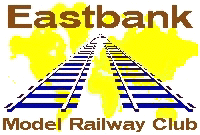l
Shettleston Scenes
|
l |
Shettleston Scenes |
Once upon a time before the advent of digital photography we used cameras that were loaded with film. One of the most popular formats used was 35mm film. This film came in three varieties, monochrome negative, colour negative and colour transparencies or slides. These were generally in rolls of 20 or 36 exposures. The majority of people used the negative and print format but for railway photography, the slide format was more useful as the processed and mounted images could be projected to an audience. For most of the 1960's and early 1970's, a 36 exposure roll of Kodachrome II colour slide film cost 36/- or £1-16-00 (£1.80) including processing, mounting and return postage. Each slide therefore cost 1/- (£0.05). This was not an insignificant amount of money at that time.
As the film was in a canister, it was pulled out, threaded onto the take up spool in the camera and wound on to exposure one. You could not always guarantee that the first image would be correct and also after image 35 the rest may not be complete either. At the start and end of a film these exposures were often used on a subject that was not too important. Taking pictures out the window at St. Mark Street was one solution. After some years these images have become of more interest and that is what is displayed here.
Click on photos for a larger image Use browser "BACK button to return.